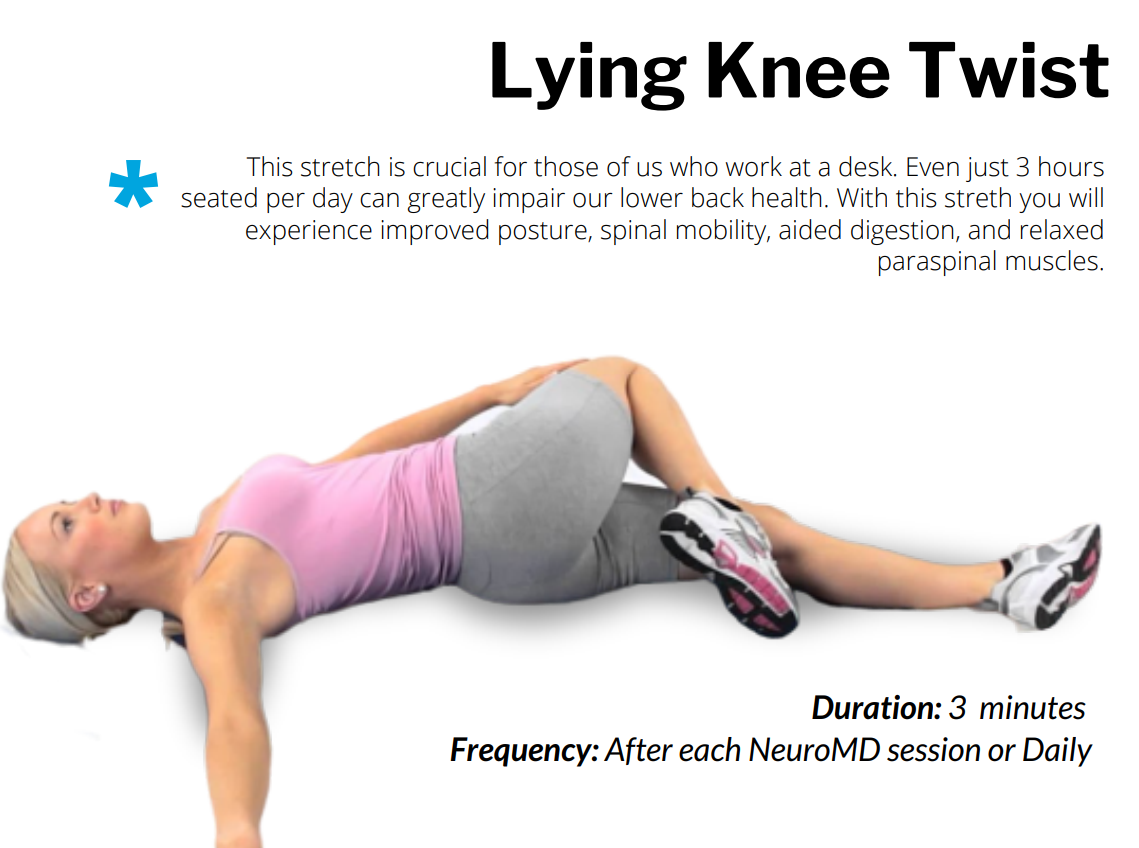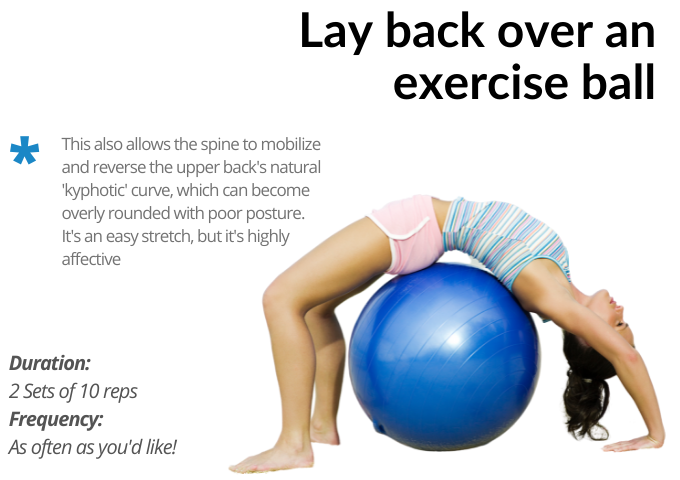Last Chance! Use code BLACKFRIDAY25 for up to 62% off
Sciatica: What It Is & How to Stretch Your Sciatic Nerve
By Jennifer S.
NeuroMD Specialist
Sciatic nerve pain can be debilitating, trust me, I know. It can leave you with limited mobility and present many challenges in daily life.
When you’re experiencing a sciatic flare-up, one of the last things you may feel like doing is exercising. However, it’s periods of inactivity such as sitting too long that can aggravate symptoms.
Let’s discuss what sciatica is to understand why exercise plays such a vital role. We’ll then dive into how to stretch your sciatic nerve with recommended stretches and other helpful at-home treatments you can start today.
What Is Sciatica?
Also called lumbar radiculopathy, sciatica refers to pain that comes from your sciatic nerve. The sciatic nerve is the largest nerve in your body and extends from the back of your pelvis to the back of your thigh.
What Are the Symptoms of Sciatica?
Here are some common sciatica symptoms:
- You feel pain that stretches from your lower spine to your buttock and down the back of your leg.
- The pain might get worse when you cough or sneeze.You usually experience pain on one side of your body.
- Sometimes, the pain may feel like a jolt or electric shock.
- There may be numbness, tingling, or muscle weakness in the affected leg.
What Causes Sciatica?
The causes of sciatica include:
- Trauma or injury to the lumbar spine or sciatic nerve
- Tumors in the lumbar spinal canal that add stress to the sciatic nerve
- A herniated or slipped disk that triggers pressure on the sciatic nerve root
- Spinal stenosis or when the spinal canal becomes narrow, which reduces the spaces for the spinal cord and nerves
What Aggravates Sciatica?
Sciatica can be aggravated by various activities and conditions such as:
- Sitting for too long: This can compress your sciatic nerve and weaken the back muscles that support the spinal structure.
- Stress: During stressful times, the brain deprives the body’s nerves (which includes the sciatic nerve) of oxygen, which can aggravate your sciatica.
- Poor posture: Improper body alignment can add extra pressure on your lower back and sciatic nerve.
- Bending over while lifting heavy objects: Activities like carrying groceries into your home, picking up a child, and gardening can put stress on your lumbar discs. This can affect your herniated discs, which can irritate your sciatic nerve.
What Can You Do to Alleviate Sciatica?
The answer is simple—get up and get moving! Exercising and stretching every day can help alleviate sciatica pain. Not to mention, it can help reduce some of the daily stress that might be aggravating your sciatica.
Physical activity helps mitigate sciatica by:
- Improving bone health: Staying physically active increases bone density and can help you strengthen your core—muscles that help protect your spine.
- Encouraging blood flow: Exercise helps increase blood flow to the nerves, muscles, and soft tissue in the spine. This can relieve stiffness and promote healing.
Exercise doesn’t necessarily mean going for a five-mile run every day (though if you can, all power to you!). The key is to simply stay physically active. This can mean going for regular walks and doing light sciatica leg stretches throughout the day. If you have a desk job, be sure to get up periodically to stand and stretch.
3 Light Stretches and Exercises for Sciatic Nerve Pain in the Lower Back
The answer is simple. Get up and get moving. Exercising and stretching on a daily basis can help to alleviate sciatica. And, believe it or not, I try to stretch at least twice a day and the results have been great!
I try to stretch at least twice a day and the results have been great! So my friends and I at NeuroMD compiled a list of light exercises designed to stretch the sciatic nerve and adjacent muscles to help you gain relief from your discomfort.
But before beginning any exercise regimen, it is important to first consult with your licensed healthcare provider.
Here are some of my favorite stretches.
Welcome to my All-Time Favorite (I can really feel the stretch and it is the best feeling ever)...the Reclining Pigeon Pose
1. While on your back, bring your right leg up to a right angle.
2. Clasp both hands behind the thigh, locking your fingers.
3. Lift your left leg and place your left ankle on top of the right knee.
4. Hold the position for a moment. This helps stretch the tiny piriformis muscle, which sometimes becomes inflamed and presses against the sciatic nerve, causing pain.
5. Do the same exercise with the other leg.
My second favorite...the Lying Knee Twist
1. Lie on your back with your legs extended straight out.
2. Bend the right knee up and cross it over the left side of your body.
3. Hold in a position that allows you to feel a gentle stretch through the back and buttocks muscles for20 seconds.
4. Tighten your core muscles and rotate back to the center.
5. Repeat this exercise three times on each side.
Other At-Home Methods for Sciatica Relief
In addition to these light stretches, there are other at-home relief remedies you can try.
Cold Therapy
Cold therapy is generally recommended during the initial onset of sciatica. Take an ice pack or put ice cubes in a bag and lay it on the irritating area for 15 to 20 minutes.
The cold temperature can reduce some of the intensity and speed of nerve signals that transmit the pain. It can also help alleviate any swelling in the affected area.
Heat Therapy
After your 15 to 20 minutes of cold therapy, take a heated towel, electrical pads, or water bottles and put them over the affected area. Heat therapy can encourage blood flow to the inflamed nerves, which can fuel the healing process.
Corrective Therapy Device
NeuroMD’s Corrective Therapy Device® is an FDA-approved, wireless device that uses technology to target the source of pain—not just the symptoms. It stimulates deep motor nerves and contracts the muscles via Neuromuscular Electrical Stimulation (NMES). After the 25-minute session, your muscles are strengthened to better align with your spine, providing long-term relief.
Get Your Complimentary eBook
Although surprisingly simple, these stretches can do wonders for your sciatic pain if they are performed regularly and properly. Check out NeuroMD's complimentary ebook if you're interested in learning even more stretches!
If your Sciatica pain lasts longer than six weeks, talk with your doctor. They may refer you to a physical therapist who can help you develop a personalized treatment plan.
Wishing you all the best on your pain relief! And remember, correct the source of the pain, don't just mask the symptoms. If you have any questions, reach out to the NeuroMD team.
XoXo,
J.S.




